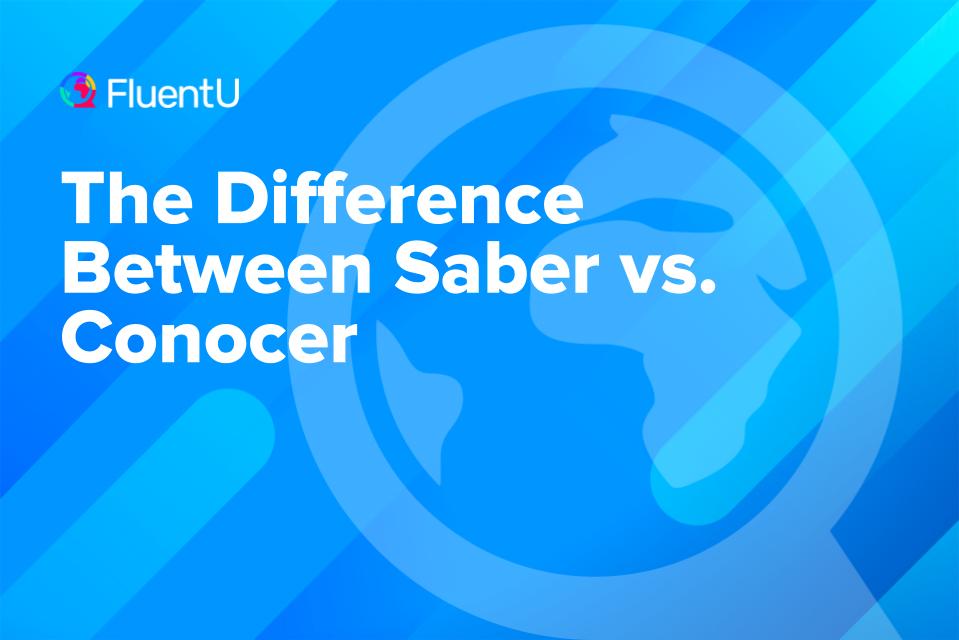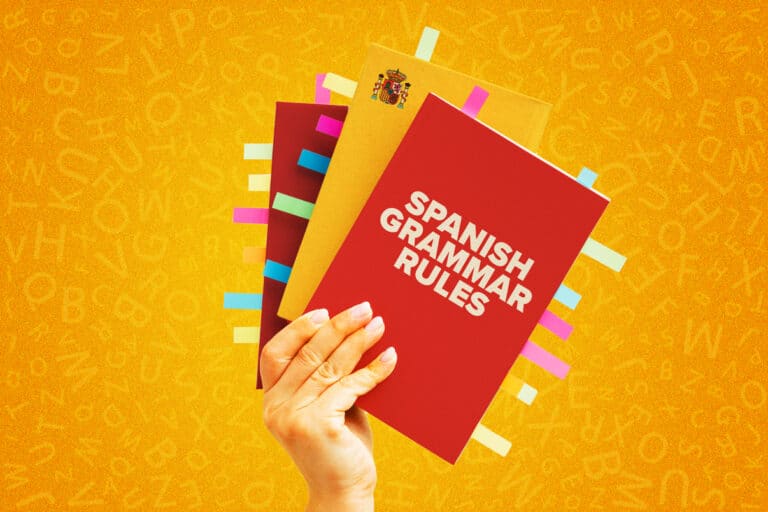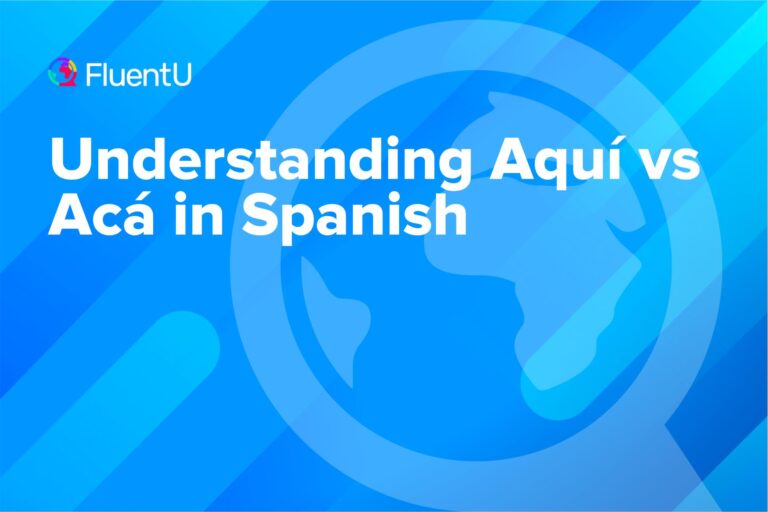The Difference Between Saber vs. Conocer

Do you know when to use saber and when to use conocer in Spanish? You may think that they are the same—after all, they both translate as to know in English.
So how do you choose the correct word to use? I’ll cover how saber vs. conocer are used in context and how their meanings differ.
Download: This blog post is available as a convenient and portable PDF that you can take anywhere. Click here to get a copy. (Download)
The Difference Between Saber and Conocer
While saber and conocer both translate to to know, they do not mean exactly the same thing and are used for very different purposes.
Saber is more related to knowledge and ability whereas conocer refers to being familiar or acquainted with someone or something.
Of course, it can get a little more complicated than that, so let’s cover both verbs in more detail.
How to Use Saber
We normally translate saber as to know in English, but if you want to be more accurate, you should translate it as to be able to, to know how to or to have knowledge or info about something.
Conjugating Saber
| yo | sé |
| tú | sabes |
| él/ella/usted | sabe |
| nosotros/nosotras | sabemos |
| vosotros/vosotras | sabéis |
| ellos/ellas/ustedes | saben |
Use saber in the following situations:
Talking about people’s skills and know-how
Do you want to boast about how many languages you can speak or how well you can play the piano? Use saber!
This is the correct verb to use when you need to talk about a learned ability or skill.
As you can see in the English translations, the best translation for saber in these cases is can/be able to:
Sé hablar español. (I can speak Spanish.)
No sé tocar la guitarra. (I can’t play the guitar.)
Mi padre sabe contar hasta 100 en chino. (My father can count to 100 in Chinese.)
Talking about or asking for information
If you want to know when the plane lands, tell someone what time a film starts or get info about a person, use this verb.
It will normally be translated as to know in English:
¿Sabes a qué hora aterriza el avión? (Do you know what time the plane lands?)
No sé por qué Ana no ha venido. (I don’t know why Ana hasn’t come.)
Solo sé que la película empieza a las dos. (All I know is that the movie starts at two PM.)
¿Sabes de dónde es Pedro? (Do you know where Pedro is from?)
Talking about facts
It does not matter if these facts are scientific or gossip about your favorite actor. Or maybe you just have some bits of trivia to impress your friends.
If you have facts, use saber.
In this case, the best way to translate saber is to know (for a fact):
¿Sabes que la Luna es un satélite? (Do you know the Moon is a satellite?)
¿Sabías que Henry Cavill está soltero? (Did you know Henry Cavill is single?)
María dice que sabe cuántos granos de arena hay en el Sáhara. (María says she knows how many sand grains there are in the Sahara Desert.)
How to Use Conocer
The best way of translating conocer into English would be to be familiar or acquainted with.
Conjugating Conocer
| yo | conozco |
| tú | conoces |
| él/ella/usted | conoce |
| nosotros/nosotras | conocemos |
| vosotros/vosotras | conocéis |
| ellos/ellas/ustedes | conocen |
Have a look at the situations when you should use it:
To say you are acquainted with a person
This is also true when you are talking about getting to know someone and meeting someone for the first time.
Translate conocer as to know, to get to know or to meet, in this case:
…Y así es como conocí a vuestra madre. (…And that’s how I met your mother.)
¡Encantado de conocerte! (Nice to meet you!)
Conozco a John desde hace 10 años. (I have known John for 10 years.)
Quiero conocerte mejor. (I want to get to know you better.)
If you know (or don’t know) a place
Have you ever been to South America? Do you know a little bar your friends would be delighted to visit? Do you know your city like the palm of your hand?
Use conocer, then!
In these situations, the best translation in English would simply be to know (a place) or to have been (somewhere):
Conozco muy bien España. (I know Spain very well.)
¿Conoces Barcelona? (Do you know Barcelona?/Have you ever been to Barcelona?)
Juan conoce su ciudad como la palma de su mano. (Juan knows his city like the palm of his hand.)
Conozco un restaurante que te va a encantar. (I know a restaurant you will love.)
Having knowledge of something
If you know a book because you have read it or you know a movie very well because it’s your favorite, use this verb.
The easiest way of translating this verb would be to know (about something), to be acquainted with (something) and sometimes to have seen/read (something):
Conozco esa marca de café. (I know that brand of coffee.)
No conozco ese libro. ¿De qué va? (I don’t know that book. What’s it about?)
¿Conoces mi casa de verano? (Do you know my summer house? / Have you seen my summer house?)
Understanding these differences on paper is an important step, but what will really solidify these meanings in your head is when you’ve heard them used in context in actual Spanish speech.
YouTube can be a great resource for getting this necessary exposure to these verbs.
There are lessons like the video below, where conocer and saber are explained in a lesson format, so you can hear them explained in English with Spanish examples:
But you can also hear verbs like saber and conocer used in native Spanish content like news reports or music videos. This is arguably the best way to get used to these verbs because they’re being used in a natural and casual context.
But you can’t necessarily always tell which native content will contain the vocab you need to learn.
However, a video-based language learning program like FluentU lets you learn Spanish with a library of native videos.
FluentU takes authentic videos—like music videos, movie trailers, news and inspiring talks—and turns them into personalized language learning lessons.
You can try FluentU for free for 2 weeks. Check out the website or download the iOS app or Android app.
P.S. Click here to take advantage of our current sale! (Expires at the end of this month)

FAQ About Saber and Conocer
Can saber and conocer be used interchangeably?
There is only one situation when you can use them interchangeably and both sentences will be correct (though they’ll still mean something different).
This situation happens when what someone wants to know about is an abstract thing such as a truth, a mystery, a reason or a secret:
Mi hermana quiere saber la verdad. (My sister wants to know the truth.)
Mi hermana quiere conocer la verdad. (My sister wants to know the truth.)
While the version with conocer tells you my sister wants to know all the facts (the truth), the version with saber tells you she wants to find out what happened, no details necessary.
I know it is a very subtle difference, but you will get used to it with time and a lot of practice.
How do you remember saber and conocer?
So, to recap—if you want to easily recall the difference between saber and conocer, just remember that saber is usually used for knowledge and skills, whereas conocer is used for familiarity with places, people and things. If you remember that main difference, learning how to use these two words should become a breeze.
Make sure you’re always keeping an eye out for the situations where native speakers use these two words, and make a note of the sentences they use it in if you can. The more you practice, the more you’ll be able to remember the difference between these two key Spanish words.
As you can see, it only takes a few rules and a couple of examples in order to get familiar with the Spanish verbs saber and conocer.
You can now be sure that the next time you talk about your knowledge about someone or something, you will use the correct Spanish verb.
Stay curious, my friends, and as always, happy learning!
Download: This blog post is available as a convenient and portable PDF that you can take anywhere. Click here to get a copy. (Download)
And One More Thing…
If you've made it this far that means you probably enjoy learning Spanish with engaging material and will then love FluentU.
Other sites use scripted content. FluentU uses a natural approach that helps you ease into the Spanish language and culture over time. You’ll learn Spanish as it’s actually spoken by real people.
FluentU has a wide variety of videos, as you can see here:

FluentU brings native videos within reach with interactive transcripts. You can tap on any word to look it up instantly. Every definition has examples that have been written to help you understand how the word is used. If you see an interesting word you don’t know, you can add it to a vocab list.

Review a complete interactive transcript under the Dialogue tab, and find words and phrases listed under Vocab.

Learn all the vocabulary in any video with FluentU’s robust learning engine. Swipe left or right to see more examples of the word you’re on.

The best part is that FluentU keeps track of the vocabulary that you’re learning, and gives you extra practice with difficult words. It'll even remind you when it’s time to review what you’ve learned. Every learner has a truly personalized experience, even if they’re learning with the same video.
Start using the FluentU website on your computer or tablet or, better yet, download the FluentU app from the iTunes or Google Play store. Click here to take advantage of our current sale! (Expires at the end of this month.)







